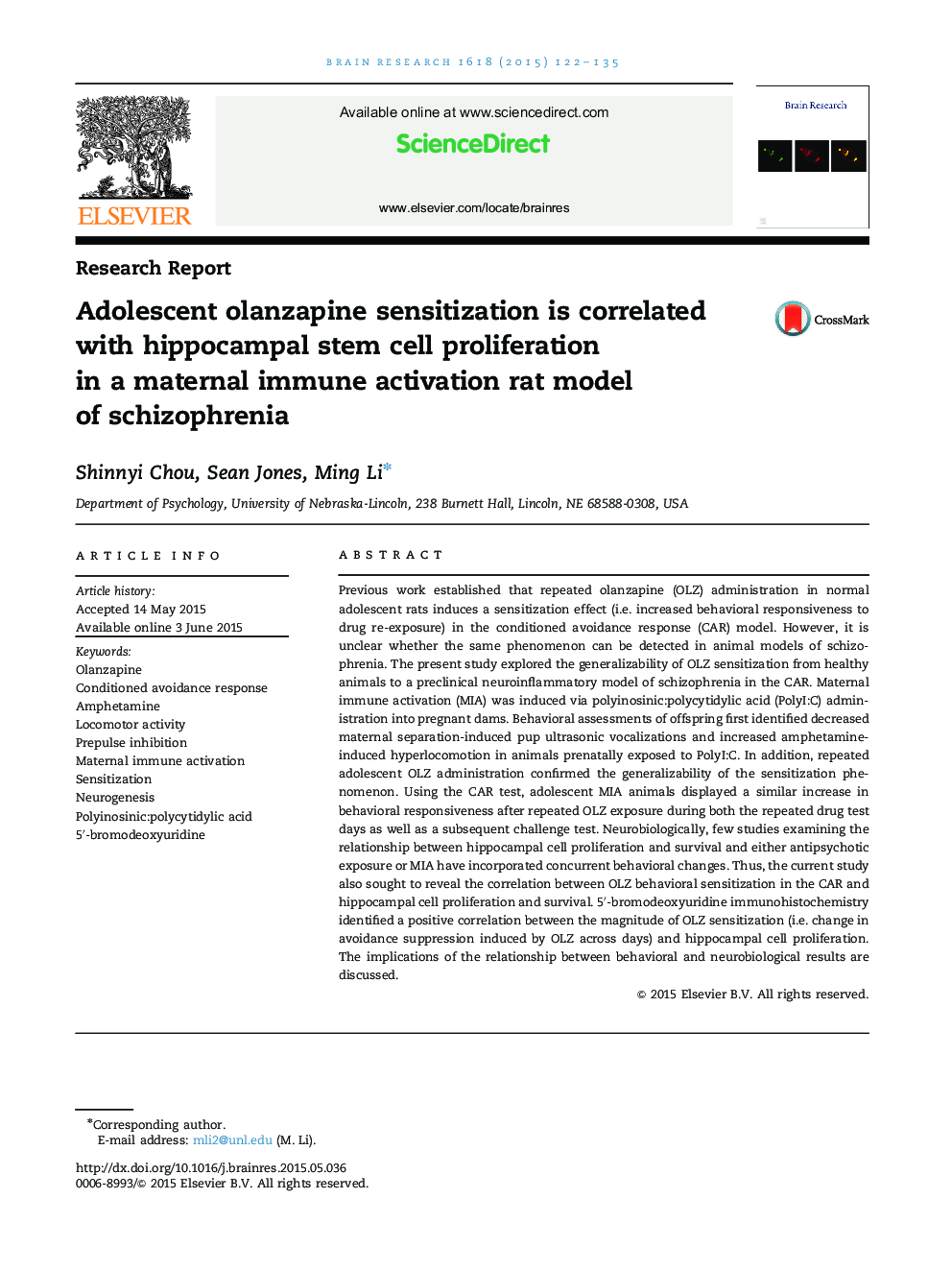| Article ID | Journal | Published Year | Pages | File Type |
|---|---|---|---|---|
| 6263055 | Brain Research | 2015 | 14 Pages |
â¢Adolescent olanzapine use causes sensitization in immune activated offspring.â¢Sensitization magnitude correlates negatively with cell survival in controls.â¢Magnitude correlates positively with cell growth in immune activated offspring.
Previous work established that repeated olanzapine (OLZ) administration in normal adolescent rats induces a sensitization effect (i.e. increased behavioral responsiveness to drug re-exposure) in the conditioned avoidance response (CAR) model. However, it is unclear whether the same phenomenon can be detected in animal models of schizophrenia. The present study explored the generalizability of OLZ sensitization from healthy animals to a preclinical neuroinflammatory model of schizophrenia in the CAR. Maternal immune activation (MIA) was induced via polyinosinic:polycytidylic acid (PolyI:C) administration into pregnant dams. Behavioral assessments of offspring first identified decreased maternal separation-induced pup ultrasonic vocalizations and increased amphetamine-induced hyperlocomotion in animals prenatally exposed to PolyI:C. In addition, repeated adolescent OLZ administration confirmed the generalizability of the sensitization phenomenon. Using the CAR test, adolescent MIA animals displayed a similar increase in behavioral responsiveness after repeated OLZ exposure during both the repeated drug test days as well as a subsequent challenge test. Neurobiologically, few studies examining the relationship between hippocampal cell proliferation and survival and either antipsychotic exposure or MIA have incorporated concurrent behavioral changes. Thus, the current study also sought to reveal the correlation between OLZ behavioral sensitization in the CAR and hippocampal cell proliferation and survival. 5â²-bromodeoxyuridine immunohistochemistry identified a positive correlation between the magnitude of OLZ sensitization (i.e. change in avoidance suppression induced by OLZ across days) and hippocampal cell proliferation. The implications of the relationship between behavioral and neurobiological results are discussed.
